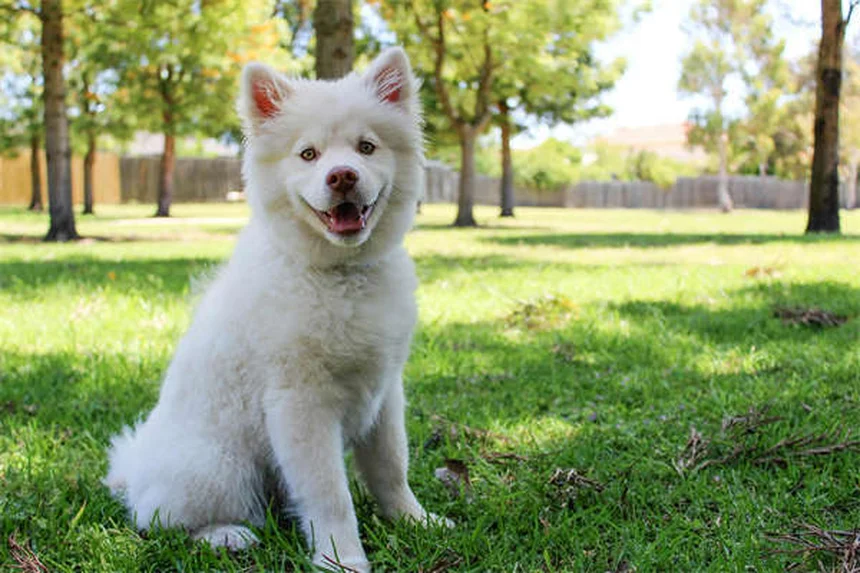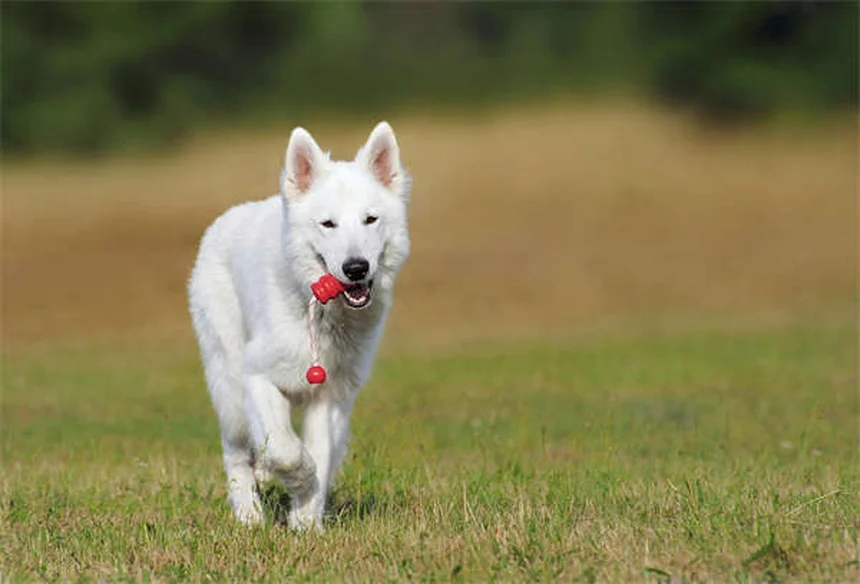How to pick up a cat the right way? The answer is: with patience, proper technique, and respect for their boundaries! As a cat owner myself, I've learned the hard way that grabbing Fluffy the wrong way can lead to scratches and a very unhappy kitty.
Dr. Julie Liu, a Fear Free Certified Professional, warns us that scruffing adult cats - that neck-grabbing move momma cats use with kittens - is a big no-no. It's painful and scary for them! Instead, we'll show you how to read your cat's body language and use gentle handling techniques that keep both of you happy.
Trust me, after you learn these vet-approved methods, you'll be picking up your feline friend like a pro - without the drama!
E.g. :Hyperadrenocorticism in Ferrets: 5 Warning Signs You Can't Ignore
- 1、Understanding Your Cat's Body Language
- 2、The Right Way to Pick Up Your Cat
- 3、Special Considerations for Kittens
- 4、Common Mistakes to Avoid
- 5、Training Your Cat to Enjoy Being Held
- 6、Expanding Your Cat Communication Skills
- 7、Creating a Cat-Friendly Environment
- 8、Understanding Play Behavior
- 9、The Science Behind Cat Purring
- 10、Seasonal Changes in Cat Behavior
- 11、FAQs
Understanding Your Cat's Body Language
Reading the Signs: Is Your Cat Ready to Be Picked Up?
You know that moment when you reach for your cat and they give you "the look"? That's your first clue! Always let your cat decide if they want interaction. I can't stress this enough - it's like asking someone for a hug; you wouldn't just grab them without checking first, right?
Here's what to look for when your cat is relaxed and open to being held:
- Soft, half-closed "sleepy" eyes
- Ears facing forward like little satellite dishes
- A tail moving slowly like a metronome
Now here's something funny - did you know cats sometimes purr when they're stressed? It's like when we hum nervously during an awkward situation! Purring doesn't always mean "I'm happy" - sometimes it's their way of self-soothing.
When to Back Off: The Four F's of Feline Stress
Dr. Liu teaches us about the "Four F's" - and no, we're not talking about grades here! When cats feel threatened, they'll show it through:
| Behavior | What You'll See |
|---|---|
| Fight | Hissing, swatting, or biting - basically kitty MMA |
| Flight | Running away or hiding under furniture |
| Freeze | Becoming statue-still (not the relaxed kind!) |
| Fidget | Excessive grooming or shaking after being put down |
Ever seen your cat suddenly start licking their lips when you pick them up? That's not them thinking about food - it's a classic fidget response! These are all clear signs your cat needs space, just like when we need our personal bubble respected.
The Right Way to Pick Up Your Cat
 Photos provided by pixabay
Photos provided by pixabay
Getting Into Position
Imagine you're approaching a celebrity for an autograph - you wouldn't charge straight at them, would you? Same with cats! Always approach from the side rather than head-on, which can feel threatening.
Here's my foolproof method that works with most cats:
- Crouch down to their level (no looming!)
- Start with gentle shoulder pets
- Slide your hand under their chest
- Support their hindquarters with your other arm
It's like holding a football, but way cuter and with more purring potential! The key is making sure their whole body feels supported - nobody likes feeling like they might fall.
Holding Techniques for Different Cats
Did you know cats have personal preferences for how they like to be held? Some enjoy the "superhero" pose with legs dangling, while others prefer full-body support like a baby koala.
But here's the golden rule: never hold a cat belly-up unless they initiate it. That position makes them feel vulnerable - imagine someone picking you up and suddenly you're staring at the ceiling! Not comfortable, right?
And here's a pro tip: put your cat down before they start squirming. It's like leaving a party at its peak - they'll remember the good times and be more willing next time!
Special Considerations for Kittens
Handling Baby Cats With Care
Those tiny furballs might look like they'd fit in one hand, but trust me - always use two hands. Kittens are like delicate little packages that need extra support.
Think of it this way: would you carry a cupcake in one hand while texting with the other? Probably not if you want to keep the frosting intact! Same principle applies to kittens - they need your full attention and support.
Common Mistakes to Avoid
 Photos provided by pixabay
Photos provided by pixabay
Getting Into Position
Here's a question that might surprise you: Do cats actually like hugs? The answer is... usually not! While we might love wrapping our arms around them, most cats find this restrictive and stressful.
Another big no-no? Only picking up your cat for "bad" things like vet visits or being removed from the kitchen counter. That's like only calling a friend when you need a favor - not a great way to build a relationship!
Training Your Cat to Enjoy Being Held
Building Positive Associations
Want to know a secret? You can actually train your cat to tolerate (or even enjoy!) being held. It's all about creating positive experiences.
Start with what I call the "lap buffet" - lure them onto your lap with their favorite treats. Make it so good they can't resist! Gradually increase the time while keeping it positive.
Remember that time you tried to learn guitar and gave up after one session? Cats are the same - keep sessions short and sweet to prevent frustration.
Alternative Ways to Bond
Here's something important: not all cats will become cuddle bugs, and that's okay! Some prefer playing with feather toys, others enjoy just sitting near you.
Think of it like human friendships - some friends are huggers, others prefer fist bumps. The key is respecting your cat's individual personality while finding ways to connect.
At the end of the day, whether your cat enjoys being held or not, what matters most is that you're paying attention to their needs and building trust. And isn't that what any good relationship is about?
Expanding Your Cat Communication Skills
 Photos provided by pixabay
Photos provided by pixabay
Getting Into Position
You know how we use emojis to express ourselves? Cats have their own version - and it's all in the tail! A cat's tail tells stories we often miss. That fluffy appendage isn't just for balance - it's their mood ring!
Here's something fascinating: when a cat's tail puffs up like a bottle brush, they're not just showing off. It's their version of our goosebumps - a physical reaction to being startled or threatened. And that gentle tail wrap around your leg? That's basically a kitty hug!
Eyes: The Windows to Your Cat's Soul
Ever noticed your cat giving you slow blinks? That's not them being sleepy - it's kitty for "I love you"! Slow blinking is one of the highest compliments a cat can give. Try slow blinking back - you'll be amazed at how they respond!
But here's a question: Why do cats stare without blinking when they're hunting? It's because they're focusing intensely - just like when you're trying to beat that impossible level in your favorite game. Unbroken eye contact means business in the cat world!
Creating a Cat-Friendly Environment
Vertical Space: Your Cat's High-Rise Apartment
Think about how you feel when you're stuck in a tiny studio apartment - that's how cats feel without vertical space! Cats are natural climbers who feel safest when they can survey their kingdom from above.
I turned my bookshelf into a cat highway with strategically placed steps, and let me tell you - my cat acts like she owns the place now (which, let's be honest, she probably does). The purring and kneading she does up there tells me everything I need to know about her happiness levels!
The Importance of Safe Hiding Spots
Ever had one of those days where you just want to hide under the covers? Cats need that option too! Hiding isn't antisocial behavior - it's essential for their mental health.
Here's a quick comparison of hiding spot preferences:
| Type of Hiding Spot | Why Cats Love It |
|---|---|
| Cardboard boxes | Snug fit makes them feel secure |
| Under furniture | Dark and protected from multiple sides |
| High perches | Great vantage point to observe safely |
Pro tip: Never force a cat out of their hiding spot unless it's an emergency. Would you want someone dragging you out of bed when you're not ready to face the world?
Understanding Play Behavior
Hunting Instincts in Domestic Cats
That crazy 3AM zoomies session? That's not your cat being weird - it's their inner lion coming out! Play is serious business for cats because it satisfies their natural hunting instincts.
Here's something cool: when cats "chatter" at birds through the window, they're actually practicing the killing bite. It's like their version of shadow boxing - rehearsing moves they'd use in the wild. Kind of makes you look at Fluffy differently, doesn't it?
Choosing the Right Toys
Ever bought an expensive cat toy only for your feline to ignore it and play with the box? There's actually science behind this! Cats prefer toys that mimic prey - things that move unpredictably like real animals would.
Feather wands that flutter like birds? Perfect! Laser pointers that disappear when caught? Frustrating! Remember how annoyed you get when your phone battery dies during an important call? That's how cats feel about lasers they can't actually "catch."
The Science Behind Cat Purring
More Than Just Happiness
Here's a mind-blowing fact: cats purr at frequencies between 25-150 Hz, which happens to be the same range that promotes bone growth and healing in humans! Some researchers think purring might actually help cats heal faster when injured.
Ever noticed your cat purring loudly at the vet? That's not necessarily because they're happy - it might be their way of self-medicating through a stressful situation. Talk about natural medicine!
The Kitten-Mother Connection
Did you know kittens can purr while nursing? It's their way of saying "everything's okay" to mom while they're vulnerable and feeding. Adult cats often carry this behavior into their relationships with humans - that comforting purr when they're curled up with you is basically them saying "I trust you."
Here's a question that might surprise you: Can all cats purr? The answer is no! Big cats like lions can roar but can't purr continuously like domestic cats. Meanwhile, smaller wildcats can purr but can't roar. It's nature's way of giving each species their own special talents!
Seasonal Changes in Cat Behavior
Winter Cuddles Explained
Notice how your cat suddenly becomes your personal space heater when temperatures drop? That's not just because they love you (though they might) - cats seek warmth just like we do!
My cat turns into the world's neediest creature when winter hits, following me from room to room like a fuzzy shadow. But come summer? Suddenly she's too cool for school, preferring the cold tile floor to my lap. Seasonal affection is totally normal in the cat world!
Spring Fever in Cats
That extra energy burst in spring isn't just your imagination. More daylight triggers hormonal changes that can make even indoor cats more active. It's like their version of spring break - all that extra energy needs an outlet!
This is the perfect time to introduce new interactive toys or rearrange their climbing spaces. Think of it like spring cleaning for your cat's mental stimulation - out with the old, in with the new adventures!
E.g. :How to pick up a cat like a pro - Vet advice on cat handling. - YouTube
FAQs
Q: Is it okay to pick up a cat by the scruff of its neck?
A: Absolutely not for adult cats! While mother cats carry kittens this way, Dr. Liu explains that scruffing can be painful and terrifying for grown cats. Imagine someone grabbing you by the back of your shirt collar and lifting - not comfortable, right? Instead, we recommend using two hands to fully support your cat's body. Place one hand under their chest and use your other arm to support their hindquarters. This "football hold" makes them feel secure. Remember, even if you've seen people do it in videos, scruffing removes your cat's sense of control and can damage your relationship with them.
Q: How can I tell if my cat wants to be picked up?
A: Great question! Cats are masters of body language. Look for these positive signs: relaxed muscles, slow blinking "love eyes," forward-facing ears, and a gently swaying tail. My cat Mr. Whiskers does this cute thing where he'll rub against my legs when he wants up. But watch out for the "Four F's of stress" Dr. Liu mentions: Fight (hissing/biting), Flight (running away), Freeze (going stiff), or Fidget (lip licking). If you see dilated pupils, flattened ears, or a thrashing tail - back off! It's like when someone invades your personal space; you'd want them to notice you're uncomfortable too.
Q: What's the best way to hold a cat once I've picked them up?
A: Here's my foolproof method that works with most cats: Support their chest with one hand while cradling their hindquarters with your other arm, keeping them close to your body. Think of holding a delicate football! Some cats like their legs dangling, while others prefer more support. But avoid the baby-cradle position - belly-up makes most cats feel vulnerable. Pro tip: Put them down before they squirm. I learned this the hard way when my cat leapt from my arms mid-yawn! Ending on a positive note keeps them willing for next time.
Q: Can I train my cat to enjoy being held?
A: You bet! Start with what I call the "lap buffet" - lure them with high-value treats while they're near you. Gradually work up to brief holds while they're distracted by the yummy snacks. Keep sessions short (like 30 seconds at first) and always end before they get annoyed. My neighbor trained her rescue cat this way - now Mr. Grumpy actually asks to be held! But remember, some cats are just not cuddlers, and that's okay. As Dr. Liu says, there are other ways to bond, like playtime or just hanging out together.
Q: Are there special techniques for picking up kittens?
A: Those tiny furballs might look like they'd fit in one hand, but always use two hands! Kittens are like delicate cupcakes - you wouldn't carry one while texting! Support their entire body to prevent injury and help them feel secure. Avoid holding them high in the air like a trophy - it's scary when you're that small! Instead, keep them close to your chest where they feel protected. And no scruffing, even with kittens - while mom cats do it, we humans don't have the same gentle touch. Proper handling from the start helps kittens grow into confident, trusting adults.


